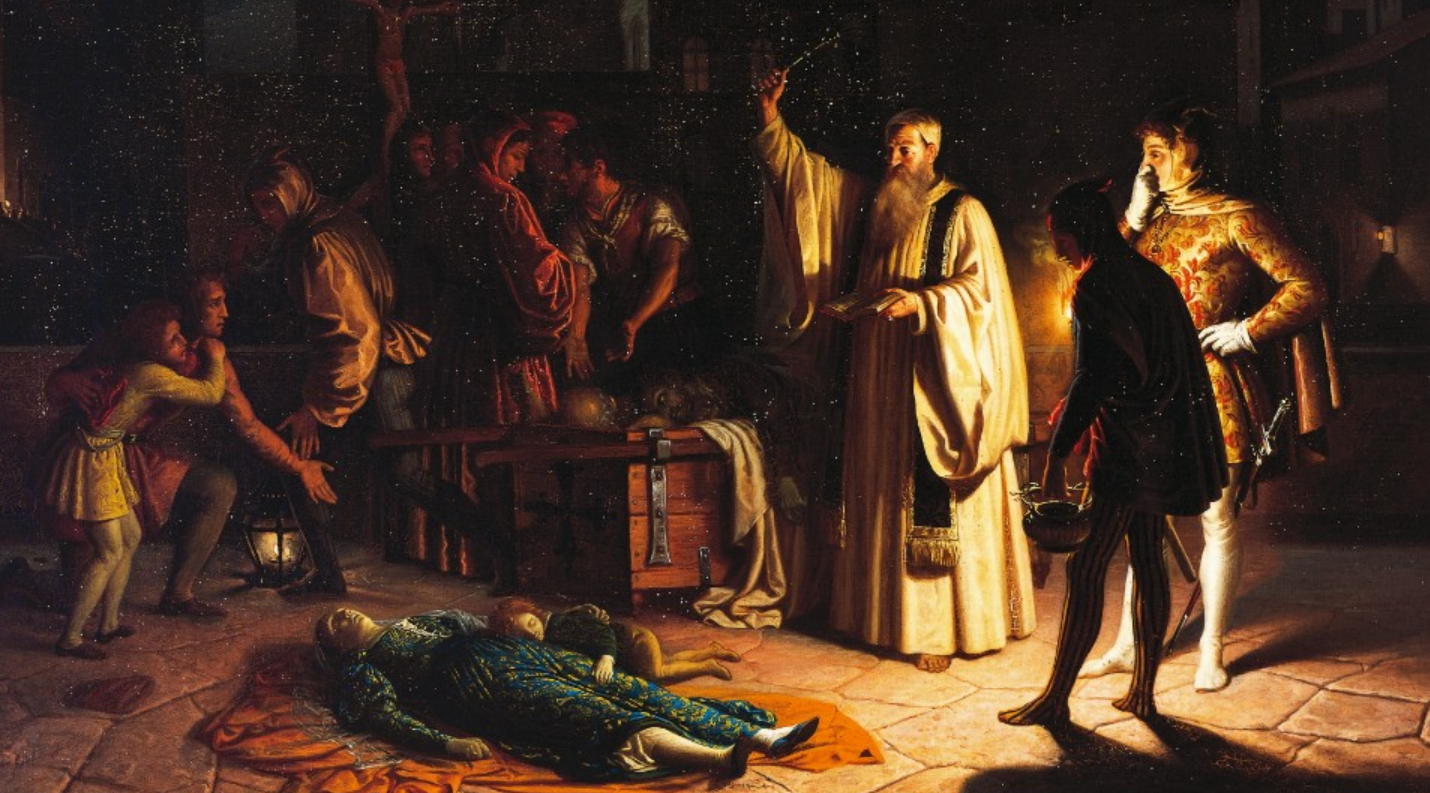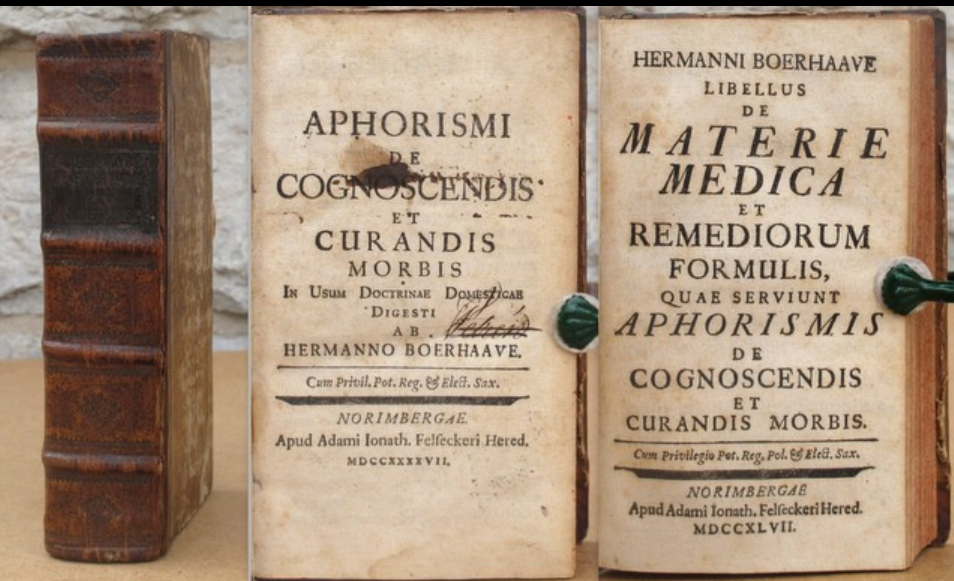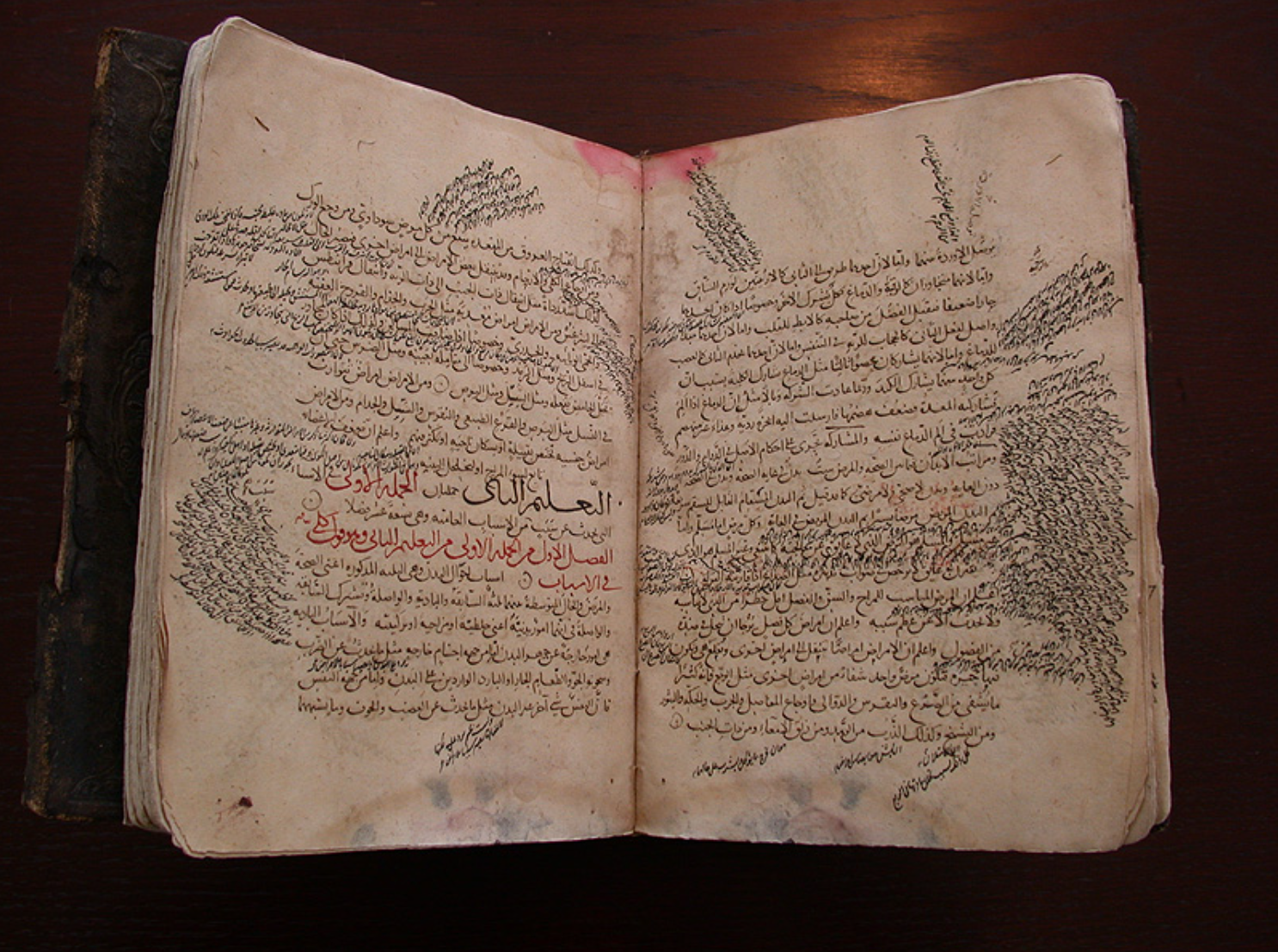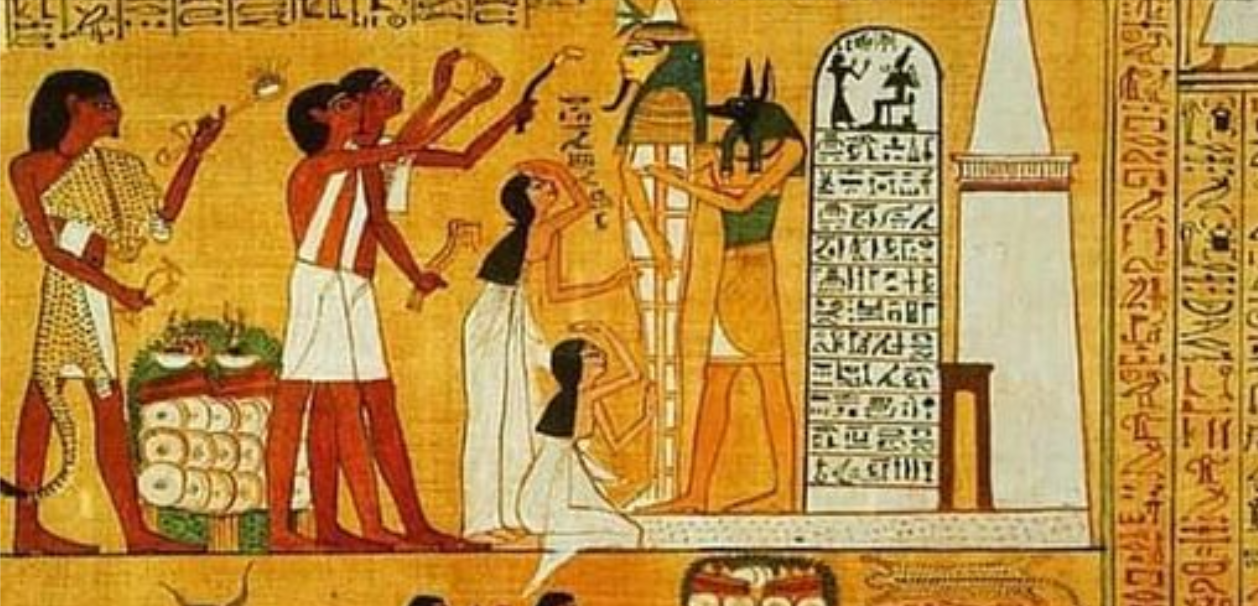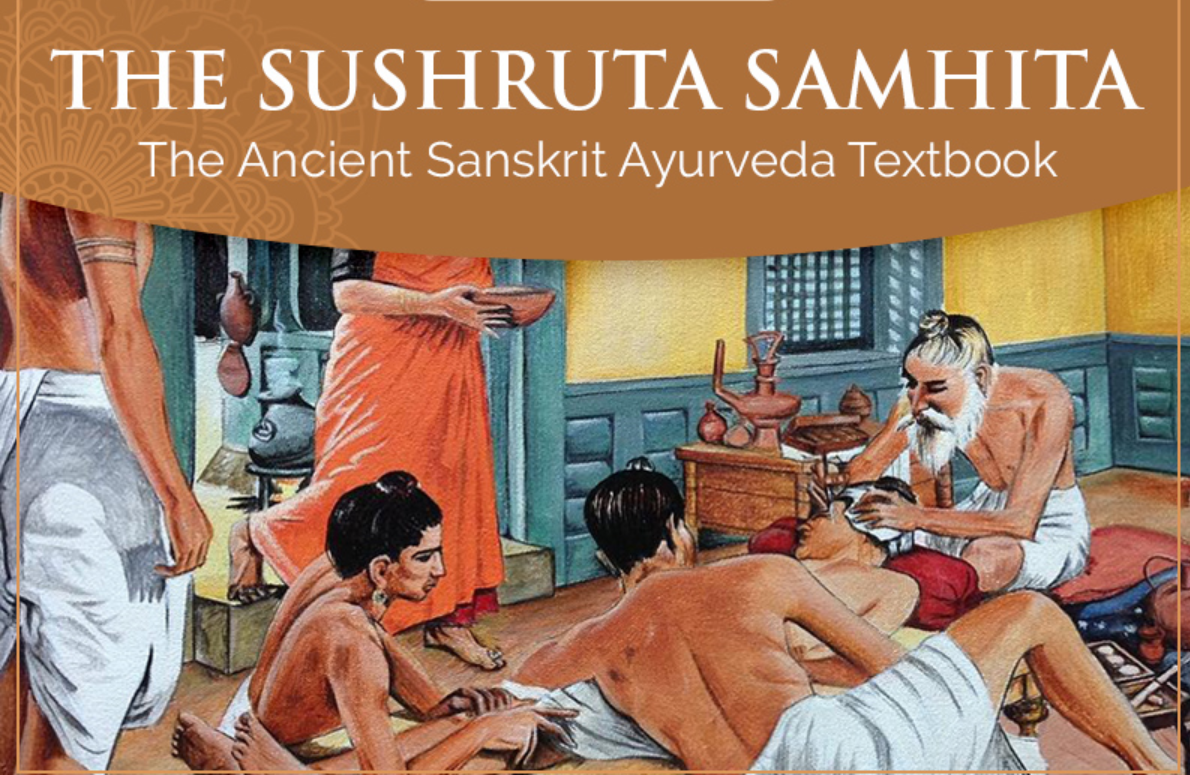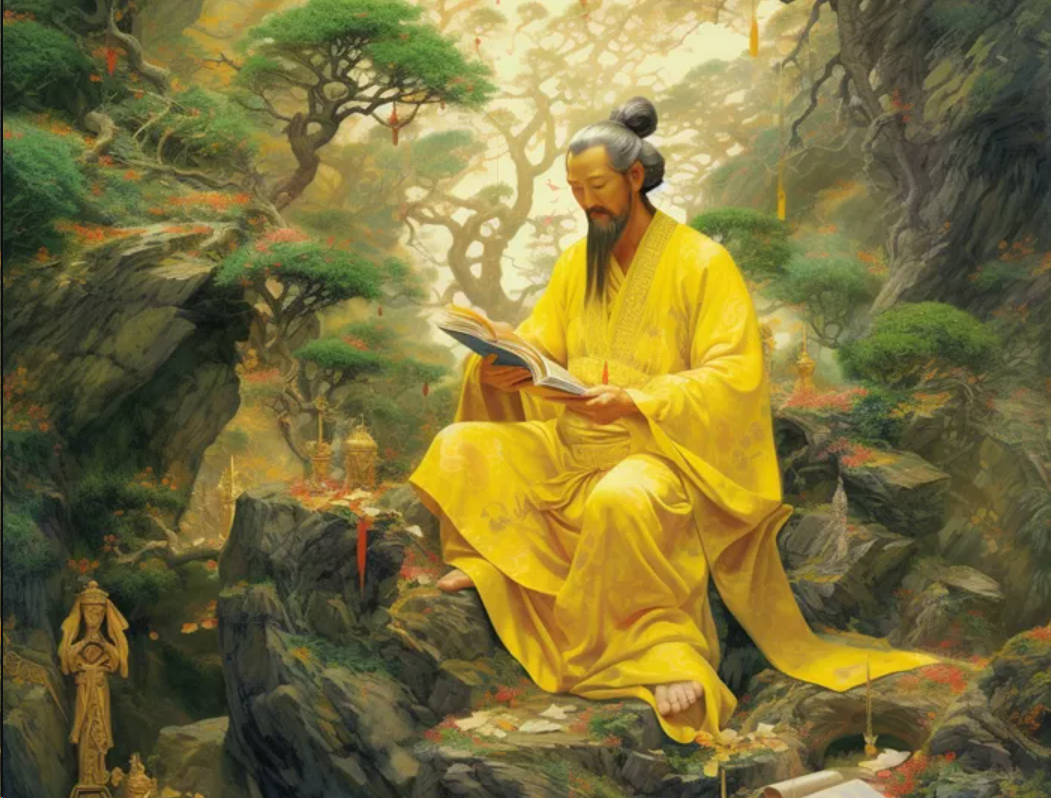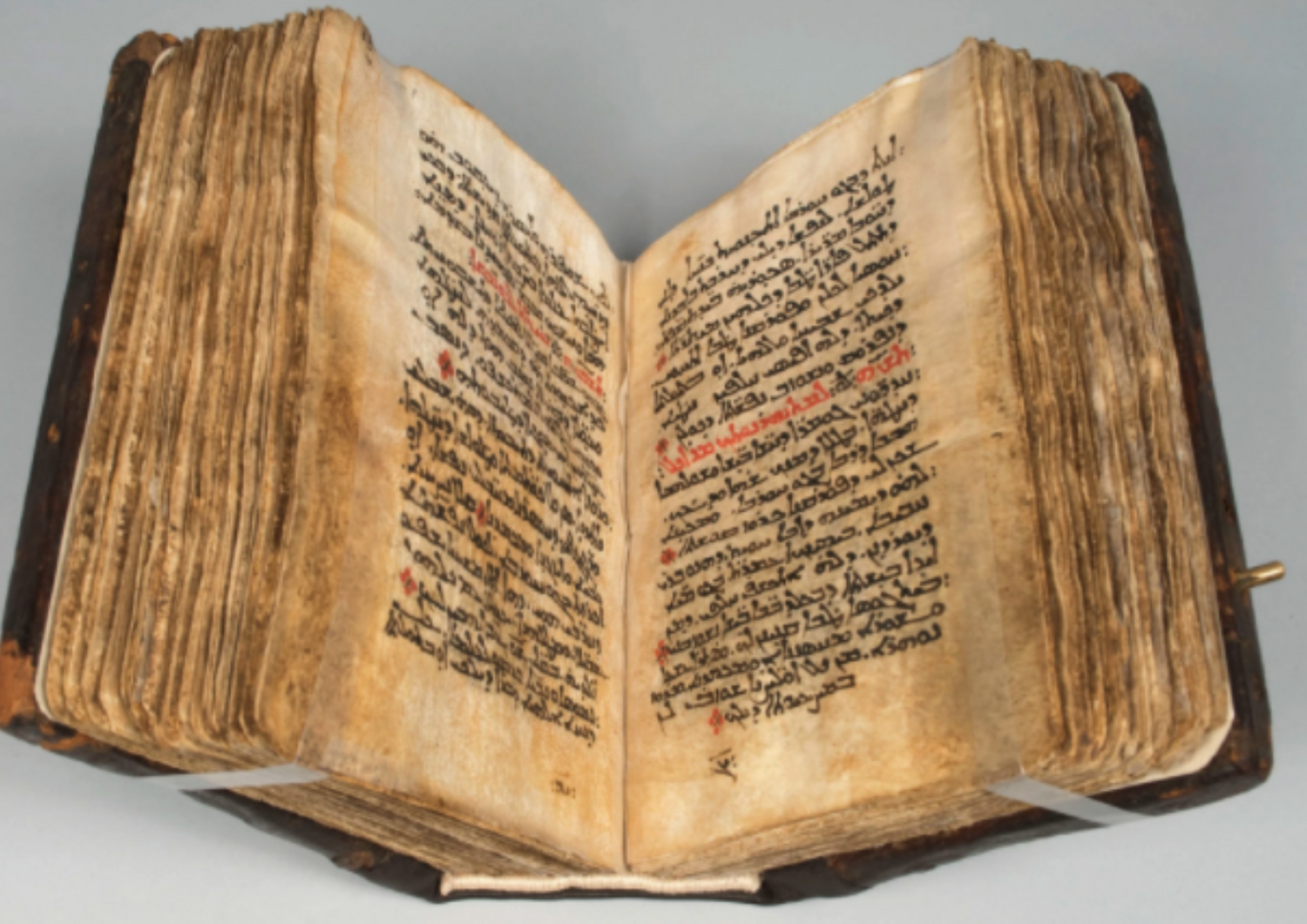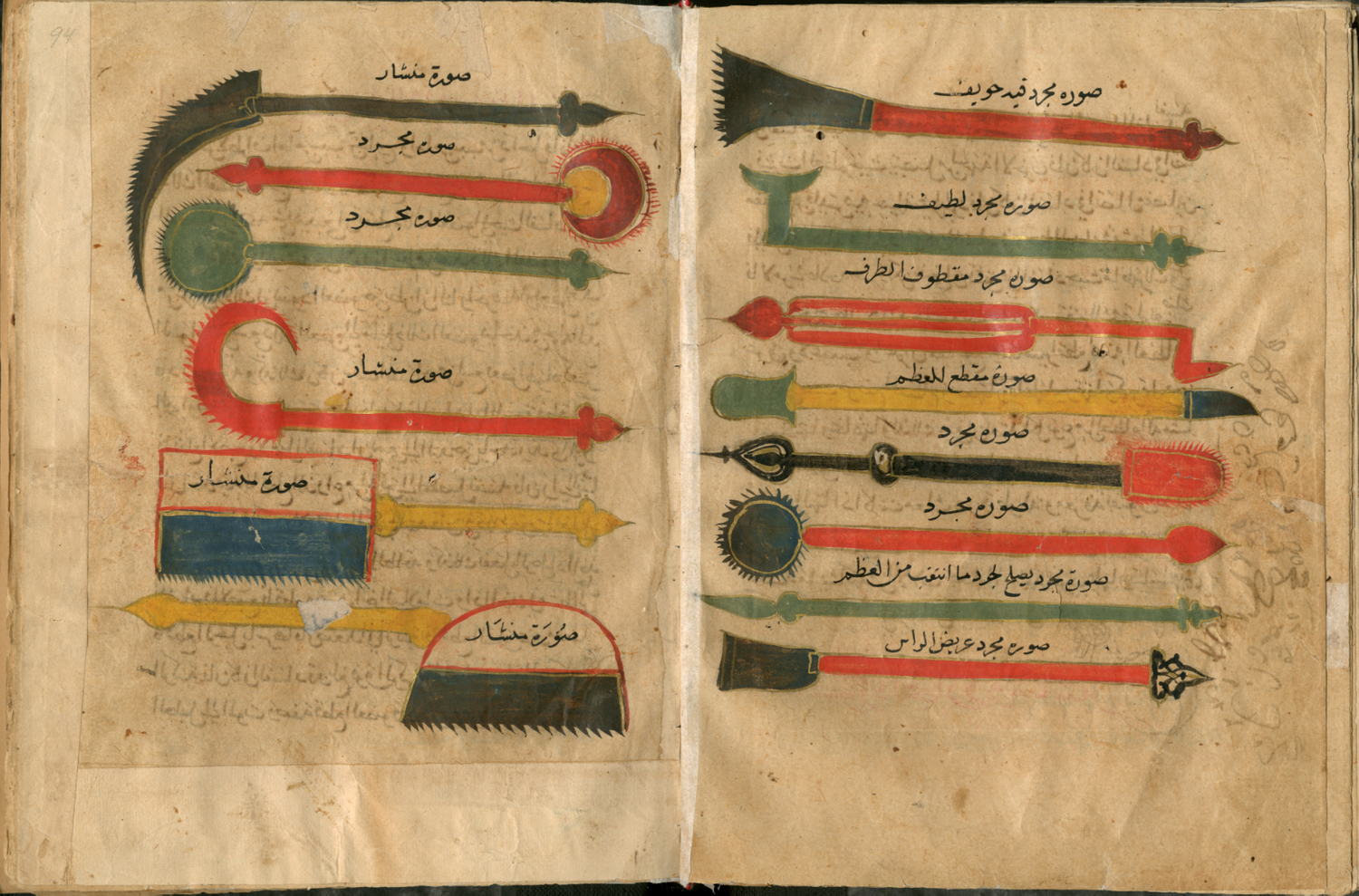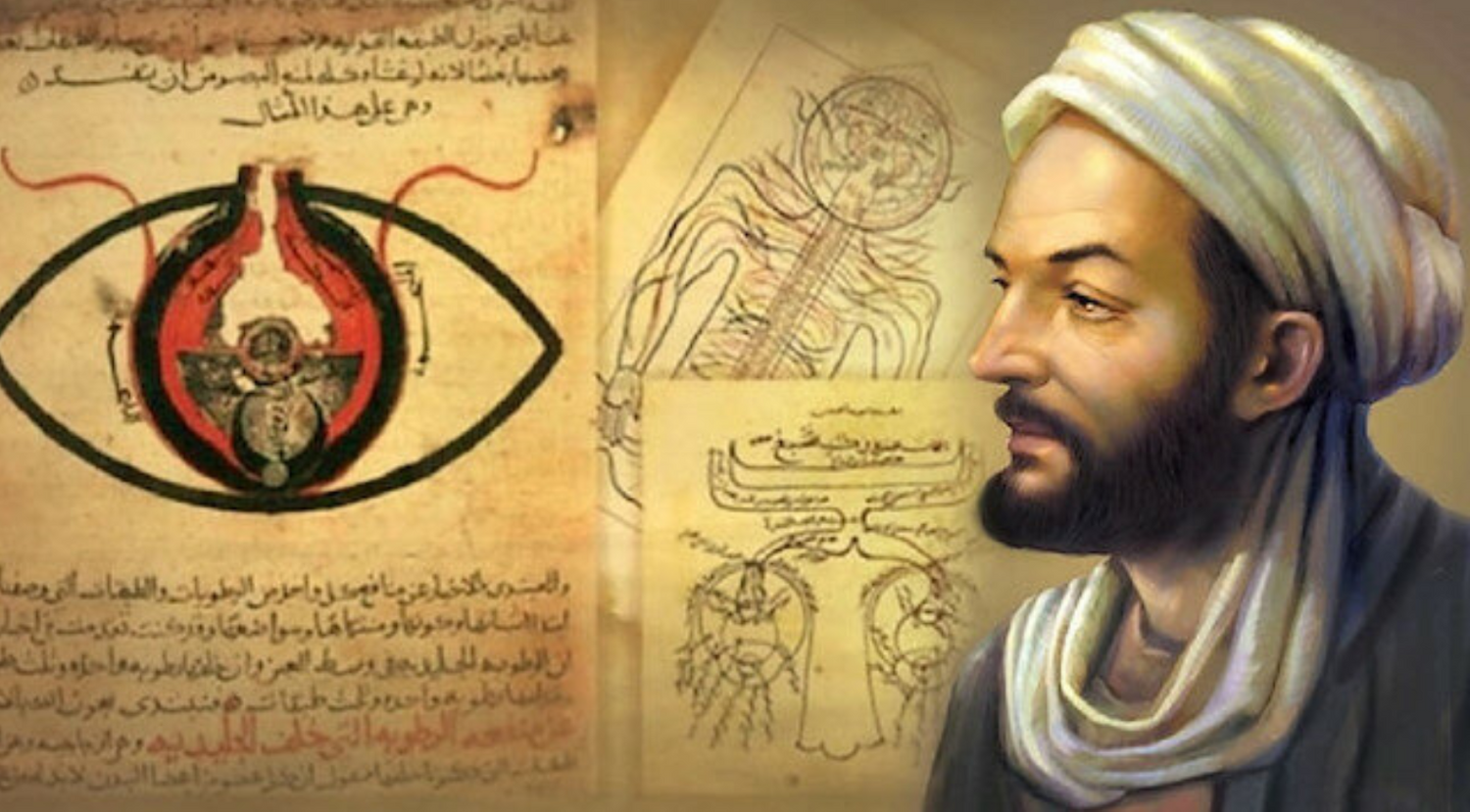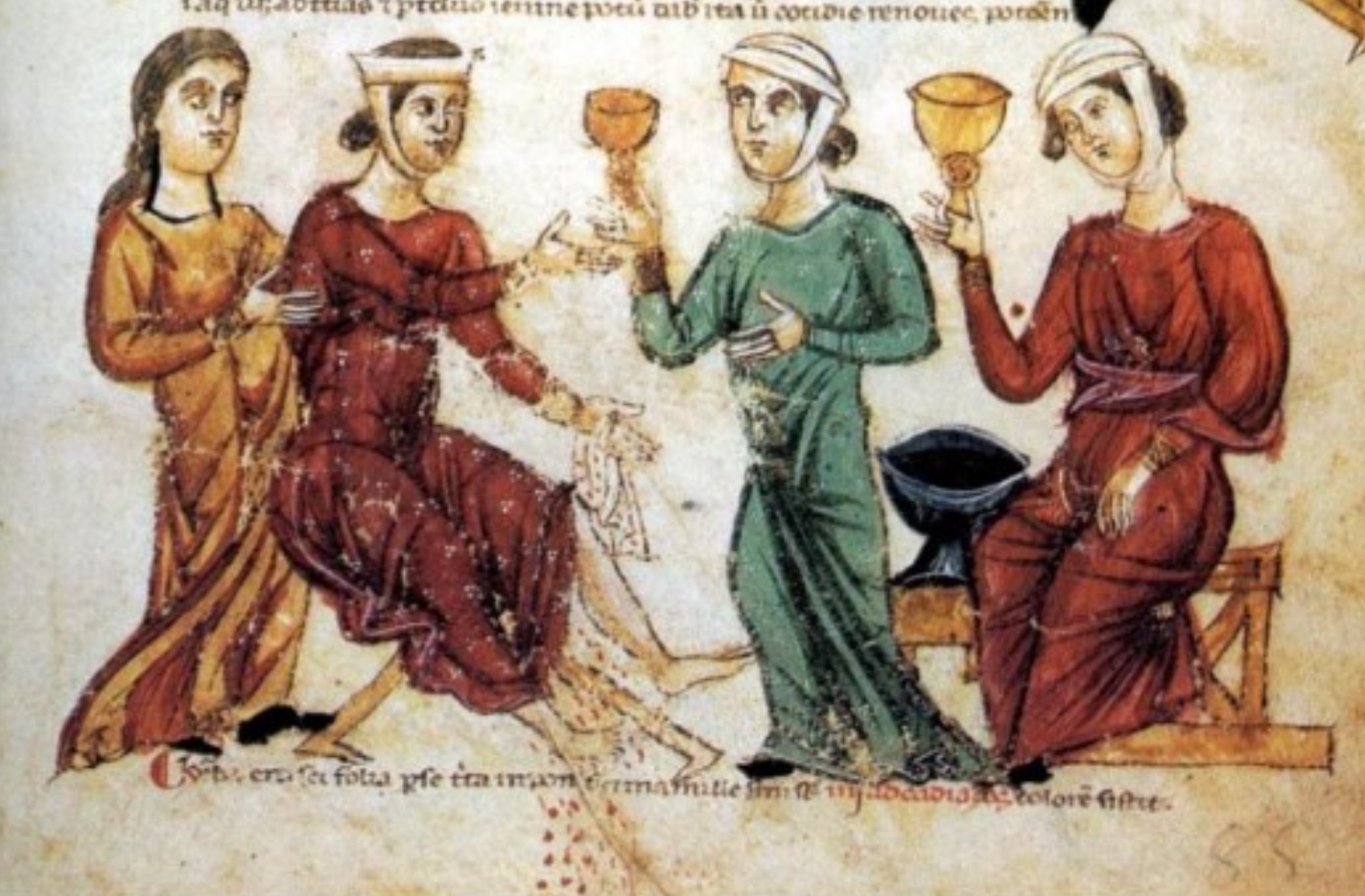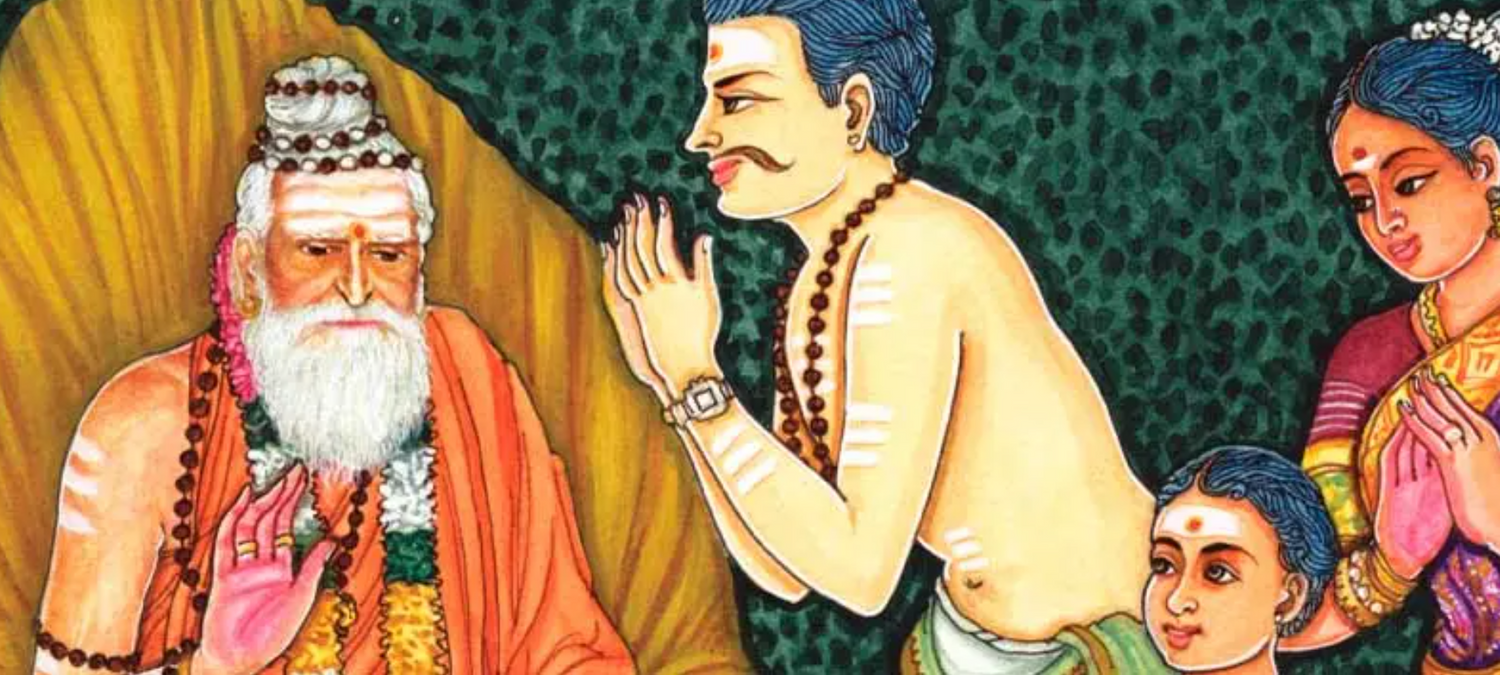As promised this is a closer look at the roots of home remedies. The ancient medical texts were comprehensive in nature, addressing a wide array of health conditions that are remarkably similar to those we recognize today, albeit understood and described within the context of the knowledge of the time. Here’s how these texts might be categorized based on the ailments and conditions they addressed:
A collection of around 60 to 70 early Ancient Greek medical works strongly associated with the physician Hippocrates and his teachings. The exact number of pages can vary widely depending on the edition, translation, typesetting, and commentary included in the publication.
In some modern editions, the entire "Hippocratic Corpus" could range from 400 to 1,000 pages or more. However, it is essential to note that these are works compiled over time and were not originally bound as a single book as we might expect today. They were written on scrolls and later compiled by others after Hippocrates' time. These texts are foundational to Western medicine, emphasizing a rational and systematic approach to healthcare.
The texts provide an elaborate system for forecasting the outcome of diseases based on observed symptoms and patient responses, a practice that laid the groundwork for modern clinical diagnoses.
There are detailed descriptions of disease patterns and case studies of individuals and groups, documenting community health issues which are surprisingly modern in their epidemiological approach.
The concept of balancing bodily fluids or "humors" (blood, phlegm, yellow bile, and black bile) is detailed, underscoring the belief that diseases are caused by imbalances among these fluids.
The Corpus distinguishes different types of headaches and attributes them to various causes like humoral imbalances, changes in weather, or certain lifestyle factors. Treatments might include dietary changes, bloodletting, and herbal remedies, aiming to restore bodily harmony.
The Corpus distinguishes different types of headaches and attributes them to various causes like humoral imbalances, changes in weather, or certain lifestyle factors. Treatments might include dietary changes, bloodletting, and herbal remedies, aiming to restore bodily harmony.
There are case histories and treatment recommendations for various traumas, including fractures and dislocations, with an understanding of the importance of cleanliness, proper setting of bones, and rest for recovery.
The texts frequently discuss the importance of diet and lifestyle for maintaining health, foreshadowing modern preventative medicine.
In the Hippocratic Corpus, there is a clear recognition of the importance of diet to health and the treatment of diseases. This is evident in texts such as "Regimen in Acute Diseases" and "Regimen in Health". The Hippocratic physicians believed that the balance of the four humors within the body — blood, phlegm, yellow bile, and black bile — was critical to health and that diet could influence this balance.
Specific dietary regimens were prescribed for different diseases, emphasizing the role of nutrition in health and recovery.
Texts such as "Airs, Waters, Places" detail observations on how different climates can affect the physical and mental characteristics of the people living in them. For example, they noted that people from cold, mountainous regions tended to be hardier, while those from warmer, low-lying areas were often less robust. These observations extended to the belief that the risk of encountering certain diseases could be related to the characteristics of the environment.
De Materia Medica: is a seminal work in the history of medicine and pharmacology, written by the Greek physician Pedanius Dioscorides around the first century AD, this five-volume book was widely read for more than 1,500 years. Its influence spanned continents and generations, making it one of the most enduring texts in medical history.
The work is organized into five volumes, each dedicated to a specific aspect of pharmacology as understood at the time. Dioscorides meticulously cataloged numerous substances derived from the natural world, focusing predominantly on plants but also including animal products and minerals. Each entry provides descriptions of the substance's appearance, habitat, and therapeutic use, with an emphasis on medicinal applications.
What sets "De Materia Medica" apart is its methodical approach to cataloging and its empirical observations of how various natural remedies could be used to treat ailments. Dioscorides included details on dosages, methods of preparation, and potential side effects, presenting a holistic view of their uses in healing and preventive medicine.
The book served as the principal reference for herbal treatments during the Middle Ages and Renaissance, bridging ancient wisdom and emerging medical practices. Its reach extended beyond the Mediterranean, influencing Arabic and later European pharmacological traditions.
Dioscorides' observations laid the foundation for the development of modern pharmacopoeias, and his insistence on empirical evidence anticipated the scientific methodologies that would emerge centuries later. Although many of the remedies described in "De Materia Medica" have been superseded by modern science, the work remains a critical historical document, providing insight into the knowledge and practices of ancient herbal medicine. It’s also a testament to the enduring quest for understanding the healing power of nature—a quest that continues to this day in modern medicine.
A vast treatise on the use of herbal medicines to treat various conditions such as digestive problems, skin conditions, and wounds.
Includes descriptions of the properties of venomous creatures and poisonous plants, and antidotes.
Dioscorides noted that chewing the bark of the willow tree could relieve pain and fevers. This observation is remarkably prescient considering that modern science has identified that willow bark contains salicin, a substance that chemically resembles aspirin.
He described mandrake as an anesthetic for surgery and a sedative, warning also of its hallucinogenic properties. The accuracy of such descriptions is notable since mandrake contains scopolamine and hyoscyamine, compounds known to induce sedation and hallucinations.
Dioscorides discussed the sleep-inducing properties of the opium poppy and provided advice on its use for calming coughs and inducing sleep. The opium poppy is, of course, the source of opium, which contains powerful alkaloids like morphine and codeine.
The soothing and healing properties of aloe vera for skin conditions were well documented. Dioscorides described its application for treating wounds and burns, reflecting its continued use today in dermatological preparations.
Dioscorides described the use of peppermint for stomach ailments and for its aromatic properties. Modern research supports its role in relieving symptoms of irritable bowel syndrome and other digestive issues.
He highlighted garlic for its therapeutic benefits, including its effectiveness in treating digestive disorders and its general health-promoting properties. Today, garlic is recognized for its cardiovascular benefits and antimicrobial effects.
Dioscorides mentioned henbane as a treatment for toothaches and other painful conditions, though he also cautioned about its toxicity. Henbane contains hyoscyamine and atropine, both used in a controlled manner in modern medicine for their antispasmodic effects.
He cited sea onion for dropsy, an old term for edema or fluid retention. We now know that the sea onion contains cardiac glycosides similar to those found in the foxglove plant, which are used to treat heart failure.
"The Canon of Medicine," known as Al-Qanun fi al-Tibb in Arabic, is a monumental work in the history of medicine composed by Avicenna, or Ibn Sina, ) in the early 11th century . He was a Persian polymath and one of the most significant physicians, astronomers, thinkers, and writers of the Islamic Golden Age. This encyclopedia compiles medical knowledge from different cultures, primarily Greek, Roman, and Islamic, and is structured into five books, each addressing different aspects of medicine and treatment.
Avicenna's Canon was not just a mere collection of earlier knowledge; it also included his own observations and innovations, which had a substantial influence on both Islamic and European medicine for centuries. His work provided detailed insight into diseases, their spread, and their treatments, which was more advanced and comprehensive than anything that had come before. The book remained a standard medical textbook even in Europe, for over six centuries after his death, underlining its importance and the vast influence it had across the world.
Avicenna's Canon discusses the nature of various diseases and the body’s response to these diseases. His observations on signs and symptoms were meticulous. He examined the significance of symptoms like the color of skin and urine, which could provide clues to the underlying condition. For example, Avicenna described changes in urine's color, transparency, and sediment, correlating these characteristics with specific diseases.
Avicenna believed in the Galenic theory of the four humors (blood, phlegm, yellow bile, and black bile), but his approach to treatment was more expansive and included specific medications. He compiled lists of drugs and their effects and stressed the importance of dosage and timing. His recommendations often combined dietary measures with the use of specific drugs derived from plants, animals, and minerals.
Avicenna made several astute observations in cardiology. He recognized the importance of the pulse in diagnosing heart diseases and described the characteristics of the pulse in various conditions. He noted the variations in pulse that could indicate different heart diseases, some descriptions of which resemble what we today recognize as arrhythmias and angina pectoris.
Within his therapeutic approaches, Avicenna included lifestyle modifications—advising on diet, exercise, and mental health—which could be seen as a precursor to modern preventive medicine. He also described the use of herbal remedies and other substances, and he alluded to concepts that are similar to what we understand today as blood pressure regulation.
Avicenna's work in endocrinology, particularly related to diabetes, was groundbreaking. He was one of the first to give an accurate description of diabetes mellitus, observing the excessive urination (polyuria) and thirst (polydipsia) associated with the condition. He also suggested dietary management to help with the condition.
Remarkably, Avicenna was aware of the sweet taste of diabetic urine, which indicated the presence of sugar. This observation was critical in understanding the nature of diabetes as a disease where the body cannot properly process sugar.
Avicenna’s work in mental health was advanced for his time. He believed that mental health conditions could be treated not only with medication but also with psychological therapy. This holistic approach acknowledged the complex nature of mental health disorders.
The Canon differentiates between neurological and psychological disorders, a distinction that was not commonly made in medical texts at the time. Avicenna describes various mental health conditions, including what we might refer to as depression and insomnia today, and he proposed specific treatments for these disorders, recognizing the need for a tailored approach to each patient.
stands as one of the oldest preserved medical documents from ancient Egypt, estimated to date back to circa 1550 BC. This extensive document offers a glimpse into the medical practices and procedures of the time, blending empirical knowledge with mystical elements, which was characteristic of the era's approach to healing.
The mix of magic and medicine in the Ebers Papyrus reflects the ancient Egyptian belief in the supernatural elements of illness and healing. Incantations and magical spells were often invoked alongside the medical prescriptions, which is indicative of the holistic approach to medicine at the time. The treatments listed in the Ebers Papyrus were the result of centuries of empirical observation and practice, as well as the symbolic and magical thinking that pervaded ancient Egyptian culture. This document, therefore, is not only a cornerstone for understanding the medical practices of ancient Egypt but also provides a rich cultural context for the intersection of science, religion, and magic in historical medical practice.
The ancient Egyptians suffered from many of the same gastrointestinal issues that people do today, and the Ebers Papyrus offers a plethora of remedies for these conditions. Ingredients like dates and figs, which are high in fiber, were likely recognized for their laxative properties. The papyrus also contains mixtures of other herbs and minerals that were intended to aid digestion or relieve digestive issues such as diarrhea and constipation.
There's evidence to suggest that the Ebers Papyrus also included dietary recommendations not just for treating illnesses but for maintaining overall digestive health. The ancient Egyptians had a concept of preventative medicine that included the consumption of certain foods that were thought to contribute to good health and the avoidance of those that could cause imbalance.
The use of opium is noted in the papyrus, indicative of its role as a powerful analgesic even in ancient times. This is a testament to the sophisticated understanding of natural resources for medicinal purposes. Pain management was a complex affair, often involving not just physical remedies but also spiritual ones.
The holistic approach is evident in the incorporation of incantations and magical spells intended to work alongside herbal remedies. Pain and other ailments were sometimes attributed to supernatural forces, and thus, treatment plans could involve both physical medications and rituals to appease or ward off these spirits.
The Ebers Papyrus includes an impressive array of women's health treatments. It details methods for birth control using a paste made from honey and acacia leaves, which would form an acidic substance that may have had spermicidal properties. There are also references to pregnancy tests, such as placing an onion in the woman's vagina and seeing if its odor was detectable on her breath the next morning, which they believed indicated she was not pregnant.
The papyrus shows an understanding that certain diseases were caused by parasitic infections, with descriptions of symptoms that could be linked to specific parasites. The treatments for these conditions included ingredients that modern science has recognized contain compounds with anti-parasitic effects, like tannins found in many plants.
Some of the remedies listed for treating parasitic infections include herbs that were likely chosen for their vermifuge (worm-expelling) properties. These treatments could help to rid the body of parasites and alleviate the symptoms caused by these infections.
The Sushruta Samhita, a cornerstone of Ayurvedic medicine written in Sanskrit, is attributed to the sage Sushruta. Considered a medical authority for its sophisticated surgical techniques and detailed medical knowledge, it likely dates back to around 600 BCE, with revisions up until 500 CE. Though its origins are difficult to pinpoint due to its oral tradition, the text is ancient, evolving over time.
Fundamentally, the Sushruta Samhita focuses on maintaining bodily balance, emphasizing healing through the body's own systems and a rich array of natural remedies, including plants, minerals, and animal products. Its contributions to surgical practices and instruments are particularly notable, reflecting a deep scientific understanding of medicine that was advanced for its era.
Sushruta's compendium is particularly renowned for its detailed descriptions of surgical techniques, which include instructions on making incisions, suturing, the management of hemorrhage, and the extraction of foreign objects. Sushruta emphasized the importance of surgical expertise and even categorized surgical procedures into different types, such as incision (Chhedya), excision (Bhedya), scraping (Lekhya), puncturing (Vedhya), probing (Esya), and suturing (Sivya).
Sushruta's work on reconstructive surgeries like rhinoplasty is revolutionary, considering the time period. He provided detailed step-by-step reconstruction techniques, such as how to fashion a new nose using a flap of skin from the cheek or forehead—a method surprisingly similar to modern procedures. The repair of torn earlobes, common in a culture where ear ornaments were widely used, is also described.
The text's approach to anesthesia was pragmatic, using wine and herbal concoctions that likely contained substances with sedative or pain-relieving properties. These methods were crucial in making surgeries more bearable and, in some instances, even possible.
The Sushruta Samhita's focus on eye diseases was comprehensive, including both medical and surgical treatments. Surgical interventions for conditions like cataracts (termed "couching" in Sushruta's time) were groundbreaking. These procedures involved dislodging the cataractous lens to restore vision, a precursor to modern cataract surgery.
In the field of obstetrics, the text describes various stages of pregnancy, with detailed instructions on prenatal care—emphasizing the health of the pregnant woman, her diet, and activities. Delivery techniques are described, taking into account the position of the fetus, and there are also discussions on dealing with complications during birth. Postnatal care includes the care of the newborn and the recovery of the mother.
The Samhita doesn't limit itself to pregnancy and childbirth; it addresses a broad range of women's health issues. It includes discussions on menstrual disorders, fertility problems, and other gynecological conditions, offering both medicinal and surgical treatment options.
Preventive medicine is a recurring theme in the text. Sushruta discusses how diet, daily routine, sleep patterns, and seasonal variations impact health. He provides guidance on dietetics, the importance of exercise, and the avoidance of unhealthy habits, demonstrating an understanding of preventive healthcare principles.
The holistic approach of the Sushruta Samhita reflects a belief that health is the balanced integration of the body, mind, and spirit. It emphasizes that a healthy mind contributes to a healthy body and prescribes practices like meditation and ethical living as part of a comprehensive approach to well-being.
The Charaka Samhita is a critical text in the Ayurvedic body of knowledge, akin to the Sushruta Samhita's role in surgery, Charaka's work is foundational to the understanding of internal medicine. It is named after the sage Charaka, who is thought to have authored or compiled the text around the 2nd century BCE, although, like many ancient texts, it was likely revised and added to over the centuries.
The Charaka Samhita is not just a historical document; its principles and practices are still taught and followed in Ayurvedic medicine today. The text is revered for its comprehensive coverage of the principles of Ayurveda, its detail-oriented approach to internal medicine, and its holistic view of the human body and its relationship with the natural environment.
Here is an expanded view of the Charaka Samhita's content and significance:
The Charaka Samhita lays down the basic principles of Ayurveda. It discusses the theory of the five elements (earth, water, fire, air, and ether) and how they combine to form the three doshas — Vata (wind), Pitta (bile), and Kapha (phlegm) — which are fundamental to understanding the functioning of the body within Ayurveda. The balance of these doshas is considered crucial to health.
This text delves deeply into the causes and cures of diseases, with a focus on diagnosis through meticulous examination of the patient, including pulse diagnosis. It covers a wide array of diseases, from those affecting the digestive system to complex illnesses involving multiple organ systems.
Charaka's compendium provides an extensive catalog of medicinal plants, minerals, and other substances, describing their uses in treatment. It also discusses the principles of pharmacy, such as the methods of preparing and administering medicinal compounds.
The Charaka Samhita places significant emphasis on the maintenance of health through preventive measures. It outlines daily and seasonal routines, dietary regimens, and behavioral norms. The concept of 'Swasthavritta' in Ayurveda, which Charaka discusses, refers to the science of healthful living and is considered the basis for preventive medicine in Ayurveda.
The text is also known for its detailed description of medical ethics. Charaka insists on the moral and ethical conduct of physicians, outlining the qualities of an ideal physician and the importance of a compassionate and empathetic approach towards patients.
It underscores the psychosomatic connection in health and disease. The text speaks to the influence of psychic factors on health and the importance of mental wellbeing in the overall therapeutic process.
Although Charaka's focus is on internal medicine, the Charaka Samhita discusses the eight branches of Ayurveda — including internal medicine, surgery, pediatrics, and even spiritual healing — providing a holistic view of health.
Charaka Samhita is not merely theoretical; it provides a systematic approach to clinical examination and diagnosis, including questioning the patient, observing clinical signs, and direct examination of the body.
The Huangdi Neijing, also known as "The Yellow Emperor's Classic of Medicine," is an ancient Chinese text that forms the theoretical foundation of Traditional Chinese Medicine (TCM) and is still of paramount importance today. Believed to have been composed between the late Warring States period and the early Han dynasty (approximately 475-220 BCE), it is traditionally attributed to the legendary Yellow Emperor, Huangdi, although it is likely the work of many authors over time.
The influence of the Huangdi Neijing extends beyond the realm of medicine. It is a work of philosophy, ethics, and science that has shaped not only the practices of healthcare in East Asia but also the region's general understanding of balance, harmony, and the interconnectedness of all things. The principles laid out in the Neijing continue to inform not only the practices of TCM but also resonate with holistic and integrative approaches to health and wellbeing in the modern world.
The Huangdi Neijing is divided into two main parts: the Suwen ("Basic Questions") and the Lingshu ("Spiritual Pivot"). The Suwen covers the theoretical foundation of Chinese Medicine, including the concepts of yin and yang, the five elements, diagnostic methods, and the pathophysiology of diseases. The Lingshu is more focused on acupuncture, describing the meridian system, acupuncture points, and techniques.
The text elaborates on the concept of yin and yang, fundamental to TCM. It explains how the balance between these two forces is essential for health and how their imbalance leads to disease. The dynamic interplay of yin and yang in the human body mirrors the natural world's processes.
The Huangdi Neijing uses the five elements (wood, fire, earth, metal, and water) to explain the functioning of the body and its relationship to the environment. It associates each element with different organs, emotions, and aspects of the soul, providing a complex system of correspondences that is used to diagnose and treat illness.
The concept of Qi, the vital life force or energy that flows through the body, is central to the Neijing. It details the meridian system, the pathways through which Qi circulates, and how disruptions in this flow can result in disease. The Neijing's descriptions of the meridian system are the basis for the practice of acupuncture.
The Huangdi Neijing describes acupuncture techniques, types of needles, methods of needle manipulation, and the functions of the various acupuncture points in great detail. It provides the foundation for the therapeutic practices of acupuncture and moxibustion (the burning of mugwort on or near the skin).
The text emphasizes the importance of differential diagnosis and the unique treatment of each individual based on their constitution, environment, and the nature of their illness. It explains how to use observation, auscultation, and palpation in the diagnostic process.
Similar to other traditional medical systems, the Huangdi Neijing places a strong emphasis on prevention. It discusses how lifestyle, diet, emotions, and sexual activity can affect one's health and provides guidelines on how to maintain balance and prevent disease.
The Huangdi Neijing is not merely a medical manual but also contains philosophical discussions about the nature of health and existence. It advises physicians on their conduct, the importance of moral integrity, and the pursuit of knowledge.
Galen, born in Pergamon (modern-day Turkey) in 129 AD, was a prolific contributor to the fields of anatomy, physiology, pathology, pharmacology, and neurology, as well as philosophy. His extensive writings, which exceeded 500 texts, were highly regarded and formed the cornerstone of medical understanding in the Western world throughout the Middle Ages and into the Renaissance.
Galen's legacy endured largely because of the high quality of his Latin prose, which made his works a standard part of the medical curriculum throughout the Byzantine, Islamic, and Western European worlds until the 17th century when the rise of modern anatomy and physiology began to replace Galenic theories. However, his influence can still be felt today in medical language and concepts, and his works remain a subject of study for those interested in the history of medicine.
Galen's anatomical knowledge was based primarily on dissections of animals, such as pigs and Barbary macaques, because human dissection was largely forbidden in his time. Despite this limitation, he made considerable inroads into understanding the structure of the body, and his observations, although sometimes incorrect for humans, remained unchallenged until the Renaissance.
Galen was a supporter of the Hippocratic theory of the four humors (blood, phlegm, yellow bile, and black bile), and he believed that the balance of these substances was essential for health. He expanded upon Hippocratic theories and was particularly interested in the circulatory system and the movement of blood through the veins and arteries, although he did not understand circulation in the manner that William Harvey later described.
In pathology, Galen's writings were extensive. He believed that diseases were due to an imbalance of the humors and that different diseases had specific "seats" or locations within the body. He emphasized the importance of observing clinical signs and symptoms and provided detailed descriptions of numerous conditions.
Galen was also influential in the field of pharmacology, where he compiled and expanded on the knowledge of medicinal substances, their effects, and how they should be prepared and used. Galen's concoctions, known as "Galenicals," were standard in pharmacopoeias well into the 19th century.
Galen conducted pioneering work on the nervous system. He performed animal experiments that demonstrated the brain as the central organ of sensation and thought, and he identified the difference between sensory and motor nerves, as well as their connection to the brain.
Galen's approach to medicine was heavily influenced by philosophical ideas, particularly those of Plato and Aristotle. He believed that the physician's job was not only to understand the body but also to comprehend the soul, emphasizing the psychosomatic connection in health and illness.
Although Galen is more renowned for his work in anatomy and physiology, he was also a skilled surgeon. His texts include descriptions of surgical techniques, many of which he developed in his role as a doctor to gladiators, which gave him ample opportunity to practice and refine his methods.
For over a millennium, Galen's teachings were considered almost unassailable, and his authority on medical matters went largely unchallenged. His influence was so pervasive that it may have also stifled new discoveries, as deviation from Galenic teachings was often met with skepticism.
Galen's texts were used as educational tools for aspiring physicians. They provided a comprehensive system for understanding the human body and the nature of diseases, as well as a guide to treatment through diet, lifestyle changes, and medications.
Kitab al-Tasrif" (The Method of Medicine) is a comprehensive medical encyclopedia composed by Abu al-Qasim al-Zahrawi (936–1013 CE), often referred to in the West as Abulcasis. Al-Zahrawi is considered one of the greatest surgeons of the Islamic Golden Age, and his encyclopedia serves as a testament to the advanced medical practices of the era. This work reflects the cumulative knowledge of Islamic medicine during this period and was heavily influenced by earlier scholars, including the likes of Hippocrates, Galen, and others within the Islamic world.
Al-Zahrawi's "Kitab al-Tasrif" stands as a monumental work in the history of medicine, reflecting the sophisticated state of medical knowledge and practice in the Islamic world during the medieval period. Its translation and adoption in Europe are testament to its value and the cross-cultural exchange of medical knowledge during the Middle Ages. The work remained a cornerstone of European medical training well into the pre-modern era, and its influence can be seen in the development of various medical disciplines over the centuries.
"Kitab al-Tasrif" spans 30 volumes and covers a wide range of medical topics. It is not merely a theoretical treatise but also a practical manual that provides clear instructions for various medical procedures and treatments.
Perhaps the most notable contributions from Al-Zahrawi are in the field of surgery. The encyclopedia includes detailed descriptions of over 200 surgical instruments, many of which were invented by Al-Zahrawi himself. He provided illustrations of these instruments, which were used for procedures such as cauterization, incision, excision, and more.
Al-Zahrawi's work provides detailed accounts of surgical techniques, some of which were highly innovative and ahead of their time. For example, he describes procedures for ligating blood vessels almost 600 years before Ambroise Paré, who is often credited with the discovery in the Western world.
"Kitab al-Tasrif" was translated into Latin and other European languages and became a principal reference in Western medical education. It was particularly influential in the fields of surgery and anatomy, impacting the development of these disciplines in medieval and Renaissance Europe.
The treatise includes discussions on the treatment of fractures and dislocations, showcasing an advanced understanding of orthopedic matters that influenced subsequent medical practices.
Al-Zahrawi also made significant contributions to dentistry, detailing various treatments for dental conditions, techniques for tooth extraction, and the construction of dental prostheses.
He provided insights into obstetric procedures, gynecological instruments, and descriptions of conditions related to women's health, many of which were foundational for the future development of the field.
The encyclopedia discusses methods for anesthesia, highlighting the use of narcotic-containing plant extracts and other compounds to induce sedation or reduce pain during surgical procedures.
Beyond surgery, "Kitab al-Tasrif" encompasses sections on pharmacology, including the preparation of medicines, and even cosmetology, illustrating Al-Zahrawi's broad understanding of health and medicine.
"The Book of Healing" (Arabic: الشفاء, Al-Shifa), written by Avicenna (Ibn Sina) in the early 11th century, is a grand encyclopedia intended to "cure" or "heal" ignorance of the soul. Hence, it is not limited to medical topics. Avicenna was a polymath whose expertise spanned multiple disciplines, and his aim was to offer a comprehensive knowledge base.
"The Book of Healing" remains one of the remarkable achievements of medieval scholarship, indicative of the breadth and depth of intellectual tradition during Avicenna’s time. Its contributions to the fields it covers are not just of historical interest but also represent significant milestones in the history of ideas.
The book is structured to provide an exhaustive philosophical background that underpins all branches of science and wisdom. It discusses logic, metaphysics, and ethics, offering insights into Avicenna's views on various philosophical questions.
Within "The Book of Healing," there is significant coverage of scientific and medical knowledge as understood in the context of Avicenna's time. This includes astronomy, psychology, earth sciences, physics, and medicine. His medical writings within this book are seen as an extension of the work found in his better-known "Canon of Medicine" (Al-Qanun fi al-Tibb).
One of the notable aspects of the encyclopedia is its treatment of psychology. Avicenna delves into the study of the mind, soul, and intellect, discussing topics like emotion, memory, and learning. His approach is both philosophical and medical, as he seeks to understand mental processes and their relationship to health.
Avicenna's observations on the natural world are grounded in his metaphysical framework. He explores the nature of the cosmos, the elements, and the Earth, often merging empirical investigation with philosophical inquiry.
Mathematics is treated as a tool for understanding the universe. Avicenna applies mathematical precision to logic, offering a systematic approach that later influenced both Eastern and Western philosophical thought.
"The Book of Healing" was intended as a source of knowledge that could be universally applicable. It became a reference in the Islamic world and in the West, particularly after being translated into Latin. It influenced medieval European scholars and was considered one of the pillars of wisdom.
Avicenna's attempt to compile such a wide-ranging treatise reflects the holistic view of knowledge during the Islamic Golden Age, where science, philosophy, and spirituality were interconnected. His work transcends a mere collection of facts; it is a testament to the pursuit of a unified understanding of the natural world and the human condition.
"The Trotula" is a medieval compendium of women's medicine that dates back to the 12th century. It was originally thought to have been authored by a woman named Trota of Salerno, who was associated with the famous medical school at Salerno, though more recent scholarship suggests that it may have been the work of several authors. Nonetheless, the texts are a rare medieval acknowledgement of female health care, written in an era when most medical texts were authored by men.
"The Trotula" remains an important piece of historical literature, offering modern readers valuable insights into medieval medical knowledge and the unique challenges of women's healthcare in a time when such topics were often overlooked or misunderstood.
The compendium consists of three texts, which in the medieval period were bound together and widely circulated throughout Europe:
1. "The Conditions of Women" ("De conditionibus mulierum") – This text covers a range of topics on women's health, including menstruation, conception, pregnancy, and childbirth. It also deals with infertility and what we would today recognize as gynecological disorders.
2. "Treatments for Women" ("De curis mulierum") – This section includes various remedies and surgical treatments. It is particularly noteworthy for its recipes for pharmacological preparations and its practical advice for treatments, which was somewhat progressive for the time.
3. "Women's Cosmetics" ("De ornatu mulierum") – This text focuses on what can be described as dermatology and cosmetology, providing insights into the hygiene and aesthetic practices of the time, including skin care, hair treatments, and perfumery.
The "Trotula" texts are valuable for their detailed descriptions of female anatomy and practical medical advice for women's health issues. The treatments range from herbal remedies to surgical interventions.
These texts provide not only medical insights but also a window into the social and cultural perceptions of women's bodies and health during the Middle Ages. They reflect the understanding of the time and the intersection of medicine with societal norms.
The "Trotula" became the standard work on women's medicine in medieval Europe. It was translated into several languages, including vernacular European languages, which made it accessible to a wider audience beyond the Latin-literate medical community.
In recent times, the texts have been the subject of scholarly interest for their historical significance and their contribution to the understanding of medieval medicine. They are often studied in the context of the history of women in medicine and the broader history of gynecology and obstetrics.
The "Gheranda Samhita" is a seminal scripture in the tradition of Hatha Yoga, written in the late 17th century. It is often referred to as an encyclopedic manual of yoga and is composed in the form of a dialogue between the sage Gheranda and a disciple named Chanda. Unlike other texts of its time, which focus more broadly on the philosophy of yoga, the "Gheranda Samhita" is a practical manual, detailing asanas (postures), pranayama (breath control), mudras (gestures), and meditation techniques.
In summary, the "Gheranda Samhita" stands out as a complete and systematic guide to Hatha Yoga that incorporates a holistic approach to wellbeing. Its methods are designed to purify, balance, and ultimately transform the practitioner's body and mind, leading toward optimal health and spiritual liberation.
Gheranda Samhita
The text structures its teachings around what it calls the seven limbs or steps of yoga (as opposed to the eight limbs detailed in Patanjali's Yoga Sutras). These seven limbs are:
1. Shatkarmas: Purification practices that prepare the body and mind for yoga practice.
2. Asanas: Postures that develop physical strength, flexibility, and health.
3. Mudras: Gestures and seals that regulate the flow of energy in the body.
4. Pratyahara: Techniques for withdrawal of the senses from external objects.
5. Pranayama: Control and expansion of the vital life force through breathing exercises.
6. Dhyana: Meditation techniques for concentration and inner perception.
7. Samadhi: The ultimate state of yoga, a superconscious state of union with the divine.
The "Gheranda Samhita" is known for its detailed physical instructions and its emphasis on the transformation of the physical body into what is referred to as the "divine body" through the practices of Hatha Yoga. It treats the body as a vessel for spiritual practice, a clear departure from ascetic traditions that saw the body more as an obstacle than an instrument.
The text implies that the purification and strengthening of the body can have therapeutic benefits, and it presents yoga as a means to both physical and mental health. It addresses the interplay between physical postures, breath control, and mental techniques, suggesting that the health of the body cannot be separated from the health of the mind and spirit.
The "Gheranda Samhita" is one of the three classic texts that form the foundation of modern Hatha Yoga practice, the other two being the "Hatha Yoga Pradipika" and the "Shiva Samhita". It has been particularly influential in shaping the physical practices of yoga as they are taught in the contemporary yoga scene.
The text's comprehensive approach makes it a useful guide for serious practitioners of yoga. It provides a wide array of techniques suitable for different levels of ability and commitment, offering guidance that ranges from basic practices for beginners to advanced techniques for seasoned practitioners.
Create multiple landing pages for different ad groups, run A/B tests & increase your conversion rate.
Build fully responsive AMP landing pages that load instantaneously. No more mobile bounces.
Set conversion goals and measure conversions. All the key metrics you need to optimise your campaigns.
